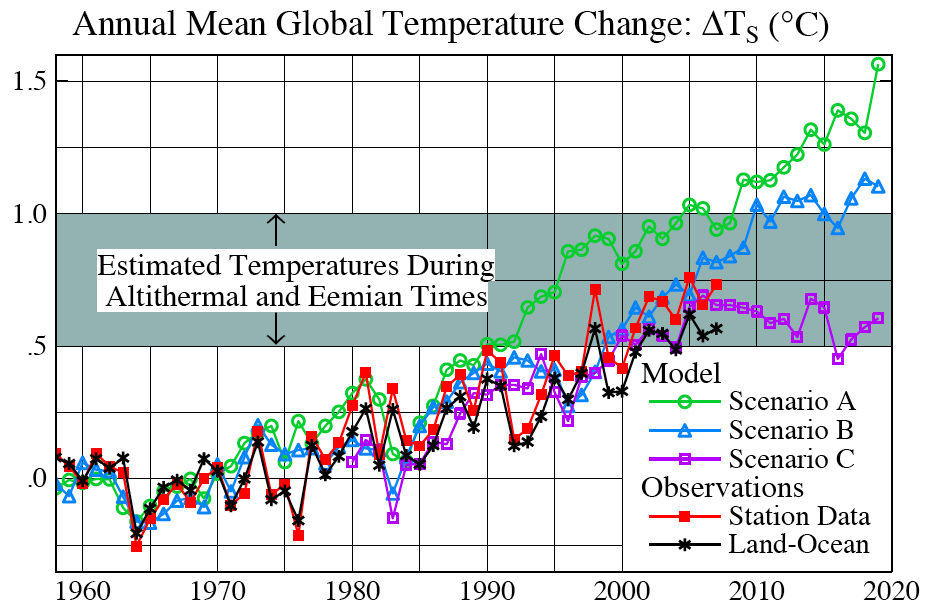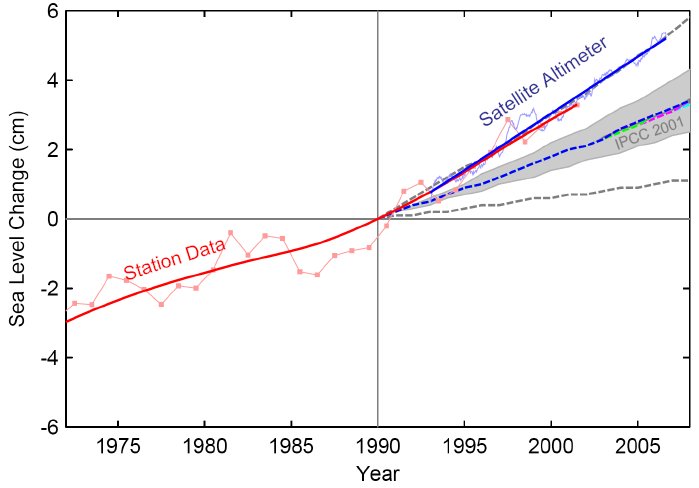Models Can Be Wrong
It’s a common mistake people make… the point is not that models ‘can’ be wrong. The point is models are ‘always’ wrong. But that does not mean that they are not relevant and useful for understanding how things work.
The reason models are always wrong is because models are not real, they are models. A model is a way of constructing a picture to show how something operates. So they can never be reality, they are a way of viewing reality. But that does not mean a model can’t reasonably represent reality in a meaningful manner.
Just because a model can’t ‘be’ reality, does not mean that models are not useful or reasonably accurate. They can certainly be accurate enough for us to get a good idea of what is happening in our climate system. In fact modeling climate is the only way to estimate climate functions with any degree of accuracy.
Modern climate models are more accurate than the instruments in some cases. The models actually help identify measurement problems in the real world. And that ‘is very’ important, because measuring the global climate is a lot of measuring. The models are so good, they can actually help identify instrumental aberrations that can then be examined and fixed.
Using this process, major mistakes in the measurements have been corrected.
Models help to understand climate.
In science it is preferable to do an experiment. But to do an experiment with global climate, we would need more planets just like Earth to test. Then we could try different mixes of greenhouse gases in the atmosphere and see what happens. However, since we don’t have any extra planets, we need to model the climate.
You make a model and test it. And others test it. And you refine it. And you refine it some more. It will never be perfect, and it can always be improved, especially when dealing with complex systems like climate.
Can climate modeling improve?
Absolutely. Continued investigation and testing of the measurements and the models will help refine the models and the measurements as well. Science is about discovery through testing. The scientific method is very careful and methodical. It is the best and only way to understand our climate.
Is climate modeling science?
https://www.realclimate.org/index.php?p=100
If we did not have climate models…
…it may have taken much longer to ‘more strongly’ confirm there was a problem in our atmospheric composition that may be dramatically affecting climate. The models allowed us to see that the temperature was rising when it should have been falling.
The models used are called Global Circulation Models (GCM’s). The major forces are fairly well known. So when the global temperature started doing something other than the model, the lead hypothesis was either something is wrong with the model, or something changed in the climate system.
That led to further examination.
Upon further examination it was found that indeed, human GHG output and aerosols were changing the way our climate system operated. Some effects had a cooling impact, and some had a warming impact. Both combined however still lead to further warming.
Do you have to have models to know global warming is happening?
It’s important to understand how wrong a model can be.
Here we see a model that is used by the IPCC, but the model is obviously wrong. The actual sea level rise is riding on the top level boundary estimates above the IPCC projections. So it is very important to understand that models can be wrong.
Here is a model of the Arctic Ice Loss Projections. Again we see that the actual observations are worse than the projections. The model is wrong.
Two or more wrongs can make a right, if well modeled.
In other words, if problems in how climate is observed and properly identified those problems can be dealt with appropriately in the models in order to improve accuracy. For example, if there is known instrument degradation or a satellite experiences orbital decay, models can cope with these issues.
The fact that models are wrong does not mean that they are not useful. Models can be used, and improved a the same time. That is why we see more fuel efficient cars, and airplanes that more more with less. Models are always being improved.
The biggest problem with models is that something is not well understood, it is given a null value. Thus the model simulation can lack important information simply because science does not guess. Science goes to the limit of its ability to accurately understand.
If the actual observation s are outside of that, all that means is that the modeling needs to be improved to explore, discover, and model the reality of the observations.
How good are the models now?
Source: Barton Paul Levenson
“Let’s review the successful predictions of the models.”
- That the globe would warm, and about how fast, and about how much.
- That the troposphere would warm and the stratosphere would cool.
- That nighttime temperatures would increase more than daytime temperatures.
- That winter temperatures would increase more than summer temperatures.
- Polar amplification (greater temperature increase as you move toward the poles).
- That the Arctic would warm faster than the Antarctic.
- The magnitude (0.3 K) and duration (two years) of the cooling from the Mt. Pinatubo eruption.
- They made a retrodiction for Last Glacial Maximum sea surface temperatures which was inconsistent with the paleo evidence, and better paleo evidence showed the models were right.
- They predicted a trend significantly different and differently signed from UAH satellite temperatures, and then a bug was found in the satellite data.
- The amount of water vapor feedback due to ENSO.
- The response of southern ocean winds to the ozone hole.
- The expansion of the Hadley cells.
- The poleward movement of storm tracks.
- The rising of the tropopause and the effective radiating altitude.
- The clear sky super greenhouse effect from increased water vapor in the tropics.
- The near constancy of relative humidity on global average.
- The expanded range of hurricanes and cyclones–a year before Cyclone Catarina showed up off the coast of Brazil, something which had never happened before.
“Looks like a pretty good track record to me. Are there problems with the models, and areas where they haven’t gotten it right yet? Sure there are. The double Inter-Tropical Convergence Zone which shows up in some coupled models, ENSO variability, insufficiently sensitive sea ice, diurnal cycles of moist convection, and the exact response of climate to clouds are all areas of ongoing research. But the models are still the best thing we have for climate prediction under different scenarios, and there is no reason at all to think they’re getting the overall picture wrong.”
Links
- https://www.realclimate.org/index.php/archives/2006/02/happy-birthday-charles-darwin/
- https://www.thebulletin.org/web-edition/roundtables/the-uncertainty-climate-modeling?order=asc
- 2009, May – Dangerous Curves: https://tamino.wordpress.com/2009/05/11/dangerous-curves/
- 2009, March 26 – Michaels’ new graph (Patrick Michaels, CATO Institute)
- 2009, January 6 – FAQ on climate models: Part II
- 2008 May 21: How to cook a graph in three easy lessons.
- 2008, November 3 – FAQ on climate models
- 2008 January 23 – The debate is just beginning — on the Cretaceous!
Document Actions



